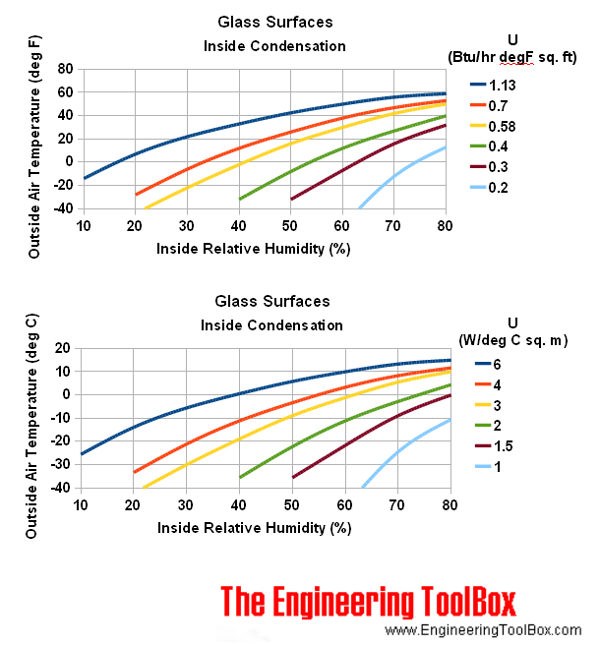Windows - Inside Condensation
Water condensation on inside glass windows surfaces vs. outside temperature and inside temperature and humidity.
The influence of
- outside temperature
- inside air relative humidity (for inside air dry bulb temperature at 65 oF (18.3 oC))
on the condensation on inside surface of glass windows are indicated in the charts below:
Windows - Overall Heat Transfer Coefficients U
- Single glass window : U = 1.13 (Btu/ft2 oF hr) = 6 (W/m2 oC)
- Double sealed glass window : U = 0.58 (Btu/ft2 oF hr) = 3 (W/m2 oC)
Example - Condensation temperature on a window surface
- indoor relative humidity of 50%
- window with single glass with U-value aprox. 6 (W/m2 oC), 1.13 (Btu/ft2 oF hr)
Based on the diagram above condensation on the inside of the glass starts when the outside air temperature is 6 oC (43 oF) .




